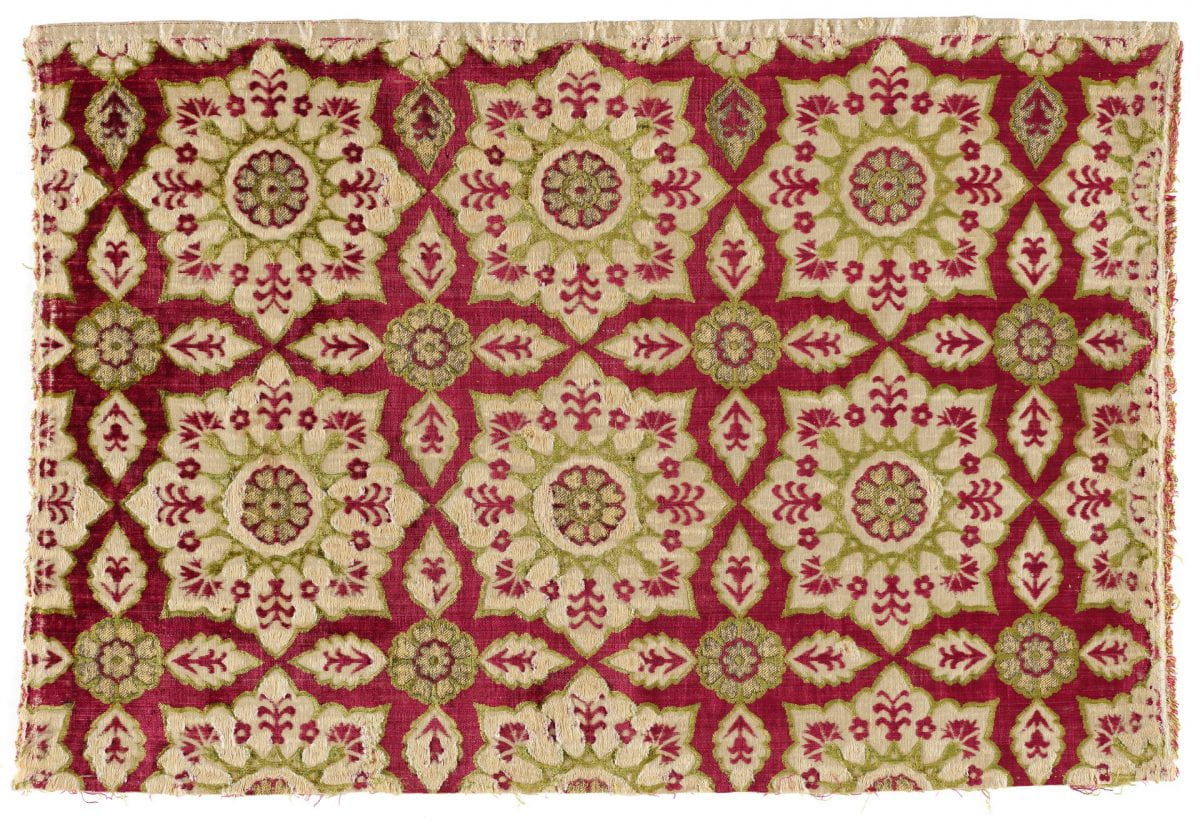For some, the word “harem” evokes images of exotic women hidden behind a veil of secrecy. In reality the term generally refers to a part of a Muslim household where women, children and servants live in relative privacy. This exquisite velvet textile may have adorned the harem in Istanbul’s Topkapı Palace.
Starting with the reign of Süleyman the Magnificent (1494-1566), Topkapı Palace served as the seat of Ottoman imperial power. Over the next four centuries, it provided luxurious private living quarters for 28 different sultans and their entourages. Harem rooms featured art objects, long divans for lounging, stylized carpets and curtains to stave off winter chills. Sumptuous velvets, patterned silks and cushion covers were woven with traditional Islamic designs and often embellished with fine embroidery.
This fragment was part of a larger textile that was likely made in an Ottoman imperial workshop in Istanbul or Bursa. The design features rows of ivory-colored octagons with rosette patterns outlined in chartreuse velvet and shimmering gilt metallic threads. The decorative motif is rich with carnations, hyacinths and forget-me-nots. Although it is not known how this textile was used, similar variations of the design can be seen on large floor coverings, rugs and ceramic tiles from the period.
Today, the Topkapı Palace serves as a museum for the public. While the secrets of its Ottoman occupants may be firmly entombed within the palace walls, the preservation of surviving art, architecture and textile fragments, like this one, offer a hint of a retreat of grandeur and color.

A room in the Harem of Topkapı Palace in Istanbul, Turkey. © Sergey Strelkov/Dreamstime.com.
